Yo, Dr. Z! I need to learn about how to package radioactive materials for shipment and I’ve got to admit I don’t know where to start. Can you help get me started?
Good luck, man – you’ve got your work cut out for you. I went over this a little bit a few posts ago, but there is certainly a lot of detail to fill in. So let’s get started!
The first thing you need to know is where to find the rules – that’s in the transportation regs. Specifically, you need to look at Subpart I of 49 CFR 173 (49 CFR 173.401 – 477). And right away you’re going to notice a lot of terms with definitions that are not really intuitive. But you have to be able to understand them if you’re going to be able to do this correctly.
So here goes….
First, there are two “forms” of radioactive materials:
Special form means that the radioactivity is in a sealed source or something similar. Specifically, it means that the radioactivity is sealed up inside a welded metal capsule of some sort. Unless they develop leaks, special form materials are unlikely to cause contamination. The A1 limit (more on this shortly) applies to special form radioactive materials.
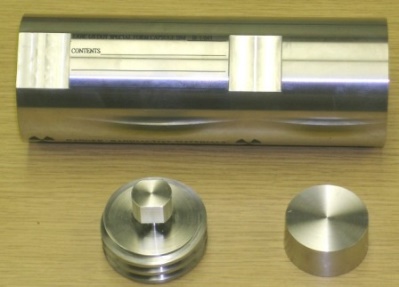
Normal form (also called “other than special form”) is everything else. These are unsealed radioactive materials – it could be contaminated soil from a remediation project, radiopharmaceuticals intended to be injected into patients to diagnose disease, or radio-labeled chemicals intended for use in research. The A2 limit applies to normal form radioactive materials.
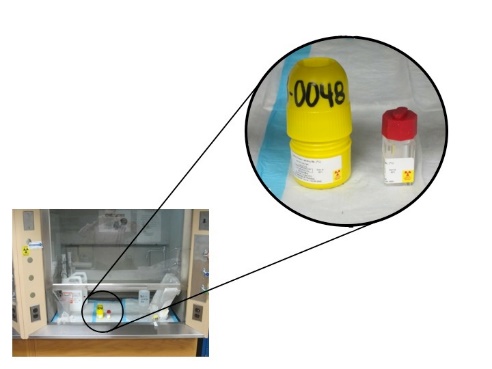
OK – so now we get to types of packages. The most common types are Type A and Type B – these will cover all of your packaging needs unless you’re shipping something fairly esoteric (fissile materials, for example, or radioactive materials that are pyrophoric). Virtually all radioactive materials travel inside of Type A packages – these can be as simple as a sturdy cardboard box, metal ammo cans that you get at an Army-Navy surplus store, or something similar (more on this in a moment). Type A packages are used to transport A1 or A2 quantities of radioactivity, so let’s take a brief detour to figure out what in the world this means. And I know this is starting to get confusing – but bear with me for a minute and hopefully it will be a little more clear.
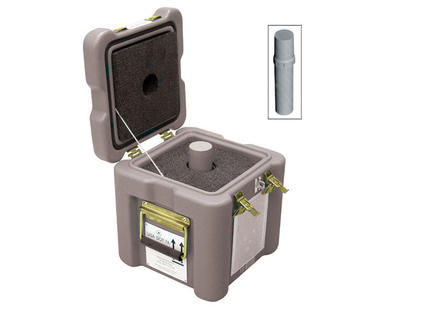
There’s a table in 49 CFR 173.435 that gives A1 and A2 quantities for a bunch of radionuclides. If the amount of radioactivity you’re trying to ship is less than the A1 activity (for special form radioactive material) or less than the A2 activity (for normal form) then you can ship the radioactive material in a Type A container. If you’ve got more than that then you have to use a Type B container.
OK – so how does this work in practice? Well…say you’re trying to ship a Cs-137 source with an activity of 20 Ci. What sort of package do you need to ship it in?
So – start off by going to the table I just mentioned. If you scroll down to Cs-137, it lists the A1 limit of 54 Ci. Since your source is 20 Ci, and 20 Ci is less than 54 Ci, it means that you can ship your radioactive source in a Type A package – easy peasy! And if your Cs-137 is not in a sealed source? Well, go a couple of columns to the right to see the A2 (normal form) column and you see that the A2 value for Cs-137 is only 16 Ci. So your 20 Ci of normal form Cs-137 has to be shipped in a Type B container, which is another kettle of fish entirely.
This helps you to figure out how your radioactivity has to be packaged, but we still need to figure out exactly what is meant by a Type A or Type B package. For this, you have to go to another part of the regs – 49 CFR 173.410 is where they start (for typical industrial packages) with additional information given in 49 CFR 173.411-412 and 415. In addition, if you’re going to certify a package yourself, 49 CFR 173.465-466 goes into all of the tests that you have to perform (and that the package has to pass – and that have to be documented) to show the package will be acceptable. For example, you have to show that the package can maintain its integrity when it’s sprayed with water, when it’s dropped onto a hard surface, when it’s dropped onto a corner of the package, when it’s stacked 5 high in a warehouse, and so forth.
So a reasonable question is “Where do I get these packages?”
One answer is that you can do it yourself. To do this, take whatever box you want to ship your radioactive materials in, outfit it the way you plan to use it, and test it. So, for example, if you’re going to have a Styrofoam insert, put that inside the box. If you plan to have your source inside a 25-pound lead shield, put the lead shield inside the box and the Styrofoam insert. If you’re going to seal the box up with strapping tape, buy some of the tape and tape up the box. And then you put it through all of the tests and document that it’s passed them all. Alternately, you can buy a Type A package (make sure it comes with a certificate that confirms it’s been tested). There are also reusable Type A containers – a metal box, for example, that can be locked with a padlock and that’s been tested to make sure it meets the Type A package criteria.
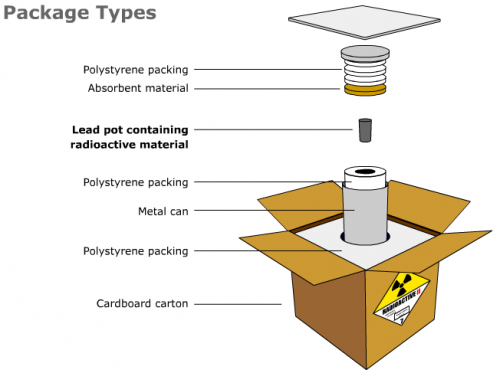
One last thing, and then I’ll try to put all of this together. If your source comes in higher than the A1 or A2 limits then you have to ship them in a Type B container. If what you have is an industrial radiography source then the camera itself is going to be an acceptable Type B container. But for the most part, Type B containers are fairly large contraptions that can weigh several thousand pounds and take up a fair amount of space – they’re usually transported by highly qualified companies that specialize in shipping high levels of radioactivity. And if you’re shipping some of the more esoteric types of radioactive materials (fissile materials, for example) then you’ve got to meet other criteria. But the people who are shipping things like this are also going to have to go through a LOT of training and they’ll know the requirements very well.
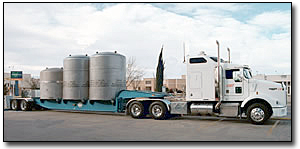
OK – so let’s try to summarize all of this.
- You’re trying to figure out how to ship, say, a 10-Ci sealed source (remember, a sealed source is considered to be special form) of Co-60
- You go to 49 CFR 173.435 and you see that the A1 limit (for special form) for Co-60 is 10 Ci. Whew – your source is less than this, so you can use a Type A package!
- You dig through your supplies and find that you have a reusable Type A package at your facility.
- You round up the Type A certificate to ensure that you (or someone else) tested the package properly.
- You stick your source in the package and ship it off to its destination.
- And if it’s a reusable package – don’t forget to insist that it be returned!